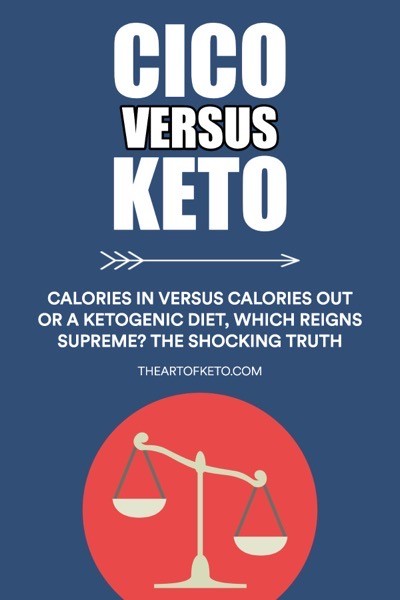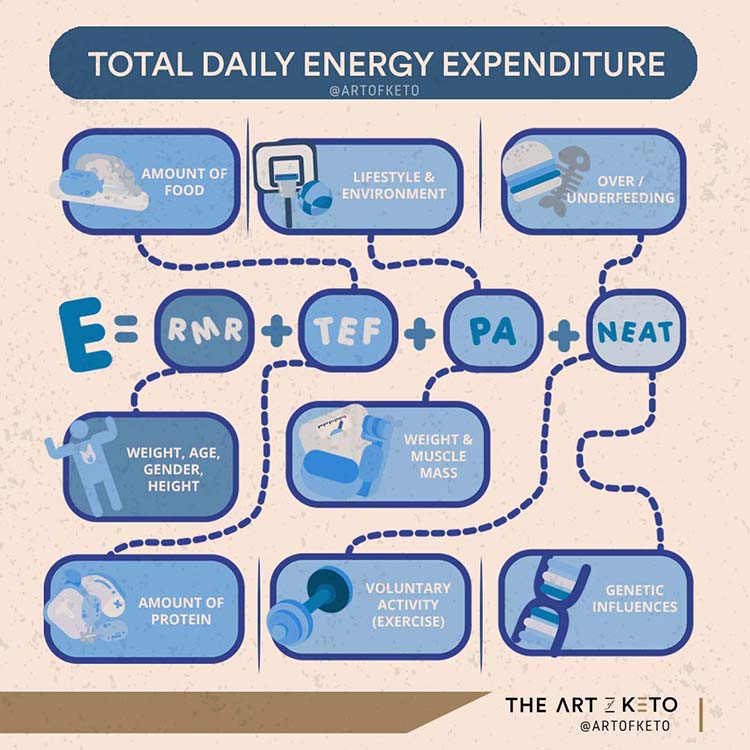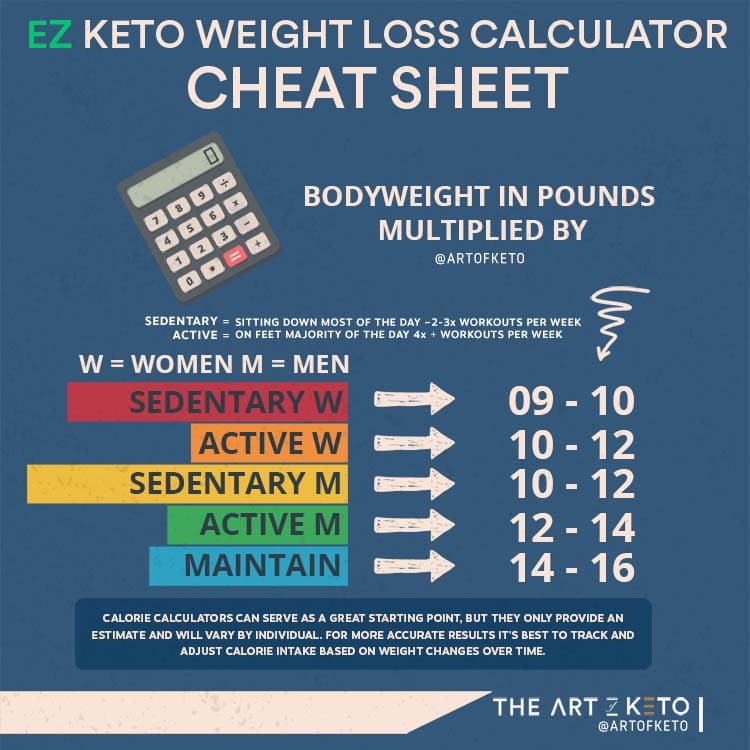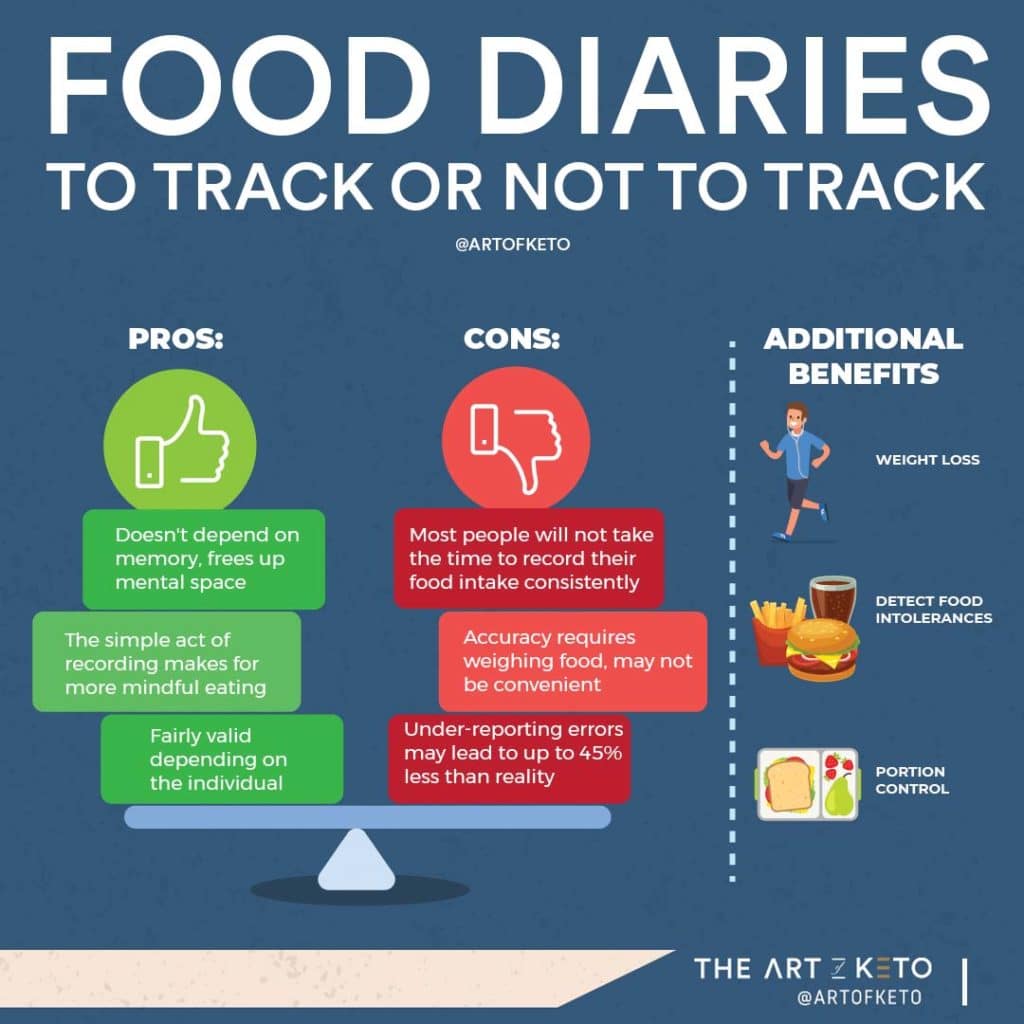Here’s the thing about diets; everyone has their opinion on what works best. The truth is, any and every diet can work IF you can stick to it.
Studies show that neither Calories In Calories Out (CICO) or a keto diet is superior for weight loss. In the case of CICO vs. Keto, neither is superior to the other. The best diet is the one that a person can adhere to, as adherence is the best predictor of weight loss success.
A lot of what I see around the ketogenic community is whether CICO, which stands for calories in vs. calories out works compared to Keto. Well, the answer may come as a shock, but they are essentially the same, or rather, work in the same way.
But I’ll get to that.
In this article, I’m going to explain how people misinterpret CICO, why it may work for some people and not for others, how CICO and Keto can work together, and much more.

Table of Contents
How Does CICO work?
What does CICO mean? CICO, which is short for calories in vs. calories out works on the premise of calorie balance.
The following equation can define calorie balance:
- Calories In – Calories Out = Net Weight
- Calories In = The calories from the foods you eat
- Calories Out = The number of calories you burn
Think of calories like your bank account.
- Money In – Money Out = Net Balance
If you put more money in the bank then you take out, your bank account grows bigger. On the opposite end, if you take more money out then you put in, your bank account becomes smaller (or negative).
Therefore, if you eat more calories (calories in) then you expend (calories out), you will gain weight. On the opposite end of that, if you eat fewer calories (calories in) then you expend (calories out), you will lose weight.That’s CICO in a nutshell, but we’ll expand upon this in a little bit.
How Does Keto Work?
Now that we know how CICO works, how does Keto work?
Well, Keto works on the same premise, except we’re restricting the foods that come from carbohydrates.
In the calories in part of the equation, the foods we eat consist of calories from protein, carbohydrates, and fat.
On a ketogenic diet, we’re nearly eliminating the calories that come from carbohydrates, which puts us in a metabolic state known as ketosis.
However, to lose weight on Keto, the same equation holds. We must have more calories going out than calories going in; there’s no way around it.Whether you don’t believe it, tracked calories, didn’t track calories, or ate until you were full each day and still lost weight.
How Keto Causes Weight Loss
With adherence being the most significant predictor of successful weight loss, 1 there are reasons why following a ketogenic diet make it easier for individuals to adhere to a diet versus a diet mixed with carbohydrates, protein, and fat.
One of the biggest reasons people end up losing weight on a ketogenic diet is because ketogenic diets have been shown to reduce appetite. 2 3 4 5
As anyone can attest to being on a weight loss diet, hanger is a real issue. Any diet that helps you feel less hungry is most welcomed.
Additionally, in a study done on athletes to assess strength and performance, the athletes following a ketogenic diet lost fat, and this was WITHOUT trying to lose weight. 6
A major contributing factor, maybe the biggest one, is that people simply can stick to a ketogenic diet better than other diets.
Many people who stick with a ketogenic diet feel as if they have more steady energy, less hunger, and find they enjoy lower carb/higher fat food options.
So in the end, weight loss occurs on Keto the same way the CICO model does, by expending more calories than you’re taking in (eating).While we can somewhat accurately measure food coming in, energy out is quite tricky.
How Energy Out Is Measured (Metabolism)

Energy out is more tricky because four main processes burn calories:
Basal Metabolic Rate (BMR or RMR). Most of the calories you burn daily come from sustaining essential human functions, such as your heart, fueling your brain, and everything else keeping you alive and ticking.
Thermic Effect Of Food (TEF), a.k.a. Digestion. You may not realize it, but it takes calories to digest calories. You heard that correctly, you burn calories digesting what you ate, and the amount will vary depending on what you eat.
Non-Exercise Activity Thermogenesis (NEAT). NEAT is an interesting subject, and that’s because this is the most significant variable seen among studies. NEAT may vary by as much as 2,000 calories per day in two people of the same height and weight.
For reference: a pound of fat has ~3,500 calories.
NEAT is all of the activity that you do throughout your day that ISN’T formal exercise. NEAT may include doing your laundry, washing the dishes, heck… even sex would count as NEAT (unless you do it to try and burn calories, LOL)
Physical Activity (PA). I think physical activity is self-explanatory, but it’s everything you do that you would generally consider “working out.” Physical activity would be things like going for a run, lifting weights at the gym, playing basketball, etc.
As you can see, so many things may affect the calories out portion of the equation, but you can generally get an average of how much we burn if you routinely do the same things daily.
Does CICO Work?
First, let’s not confuse health and weight loss.
Calories in versus calories out does hold for weight loss, but, not all calories are created equal.
So yes, CICO does work, but it’s not as simple as it may sound.
Take, for instance, protein, due to digestion, eating a more substantial proportion of your calories from protein would result in more calories burned during digestion.
Also, different foods may affect your hormones in different ways.
Again, let’s not confuse this with only insulin and hormones matter; it all matters.
Even with the “most optimized” hormones, you STILL need to eat less than you burn to lose weight… you just may be able to eat a little more than the next person and achieve the same results.Why CICO Doesn’t Work
There are various reasons why calories in versus calories out may not have worked for you, some of the main reasons I’ve outlined below.
Bad estimation
CICO doesn’t work, because most people, not you, of course, are notorious for overestimating how much they exercise and underestimating how much they consume. 7
Along with that, how much we eat and how many calories we burn daily can be an always changing value.
However, the law of averages always holds, and if you were to do something over a long period consistently, you would achieve results.
But most people are impatient; I get it, so am I.
The margin of error on labels
What’s even more shocking is that the Food and Drug Administration (FDA) allows food companies a margin of error in the accuracy of the calories listed on nutrition labels.
How much is this margin, you ask? A whopping 20 percent in either direction.
This means you could be eating 20 percent more or 20 percent less than you think you are. However, in this study, done on common snack foods, there was only about a 4 percent margin of error. The calories were found to be higher than what the label had claimed. 8
However, again, the law of averages holds true. If you stuck to the same foods, you would be able to adjust for this error over time.
But most people like to eat different things for every meal every day. Again, I get it; I do too!
Thermic effect of food
As you’ve read earlier, your body burns calories by digesting the food you’ve eaten. This is one of those examples where not all calories are created equal.
Relative to the other macronutrients, protein has the highest thermic effect, with 20 – 30% of it being used just to digest it!
Compare protein with fat, which has 0-3% and carbohydrates at 5-10%.
By eating a more significant proportion of your calories from protein, you’ll be burning more calories by simply changing your food choices.
As you see, there is al little more nuance to CICO, but that doesn’t mean it doesn’t work.
How Many Calories Following CICO?
How many calories you should eat while following Keto or CICO will vary, but a good rule of thumb for weight loss is to multiply your body weight in pounds by 10 – 12.

The smaller and/or more sedentary you are, the more toward, the lower end you would gravitate towards. The more muscle and activity you do, the higher you can generally go and still lose weight.
Again, these would just be starting points in which you would use and then adjust as necessary.
If you are not losing weight, you would gradually decrease your calories. If you are losing too much weight too quickly, you would slightly increase your calories.
I like to aim for between 0.5 – 1.5% of body weight loss per week, with leaner individuals sticking toward the lower end and larger individuals toward the higher end.
How To Calculate CICO?
The best way to calculate CICO is by monitoring your food intake (calories in) with a food journal or an app like My Fitness Pal.
Alongside your calorie intake, you would monitor your weight to receive an estimate of what your calorie expenditure (calorie out) is.
Based on your weight change, you would be able to have a general idea of how many calories it takes to maintain your weight.
As an example, let’s say you tracked your daily calories for seven days and averaged 2,000 calories per day.
If at the start you weighed 150 lbs, and at the end of the seven days you weighed 149 lbs, then we can assume you would maintain your weight with ~2,500 calories.
This is because there are ~3,500 calories in one pound of fat. If you lost one pound, we could assume you were averaging a ~500 calorie deficit per day.
3500 / 7 = 500
If you ate 2,000 calories per day and didn’t lose any weight, we might say that 2,000 calories are what it takes to maintain your current weight.
To lose weight, you would need to average less than 2,000 calories per day OR increase exercise if you don’t want to eat less.
While not a 100% fool-proof method, this is the general premise on how to calculate and use CICO to maintain, lose, or gain weight.
Keto Plus CICO
Now that we’ve learned that both CICO and Keto work for weight loss, and primarily through the same means…
A caloric deficit.
You now just need to combine the two to achieve the results you want.
That being said, it may not always be necessary to track calories, though it can be a great tool to have when things aren’t going as you planned.

As I’ve said before, If you’re following a ketogenic diet, there’s a good chance you may be able to lose weight without tracking. Ketogenic diets are notorious for causing people to feel satiated, thus causing them to eat less overall, and as a result, lose weight.
There’s a cost with everything, including weight loss.
Even with the “most optimized” hormones, you STILL need to eat less than you burn to lose weight… you just may be able to eat a little more than the next person and achieve the same results.You just have to weigh the pros and cons, and then decide if it’s worth it to you.
The Takeaway
Calories in versus calories out (CICO) and ketogenic diets cause weight loss through the same mechanism.
A caloric deficit.
However, ketogenic diets are notorious for appetite suppression, thus leading people to eat less and lose weight naturally.
While counting calories isn’t necessary to lose weight, that’s not to be mistaken with calories don’t matter when it comes to losing weight.
CICO and Keto can work together to give you the best of both worlds.
At the end of the day, CICO still holds to be accurate, but many variables make it difficult for many to implement successfully.